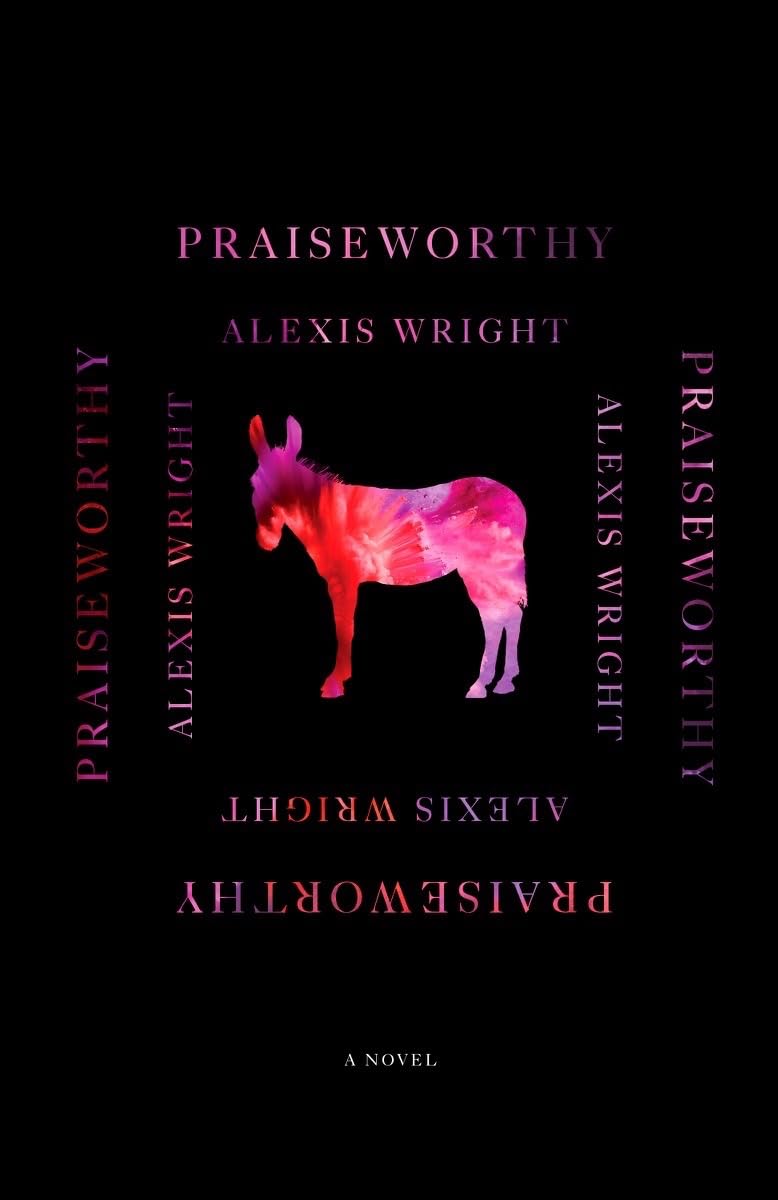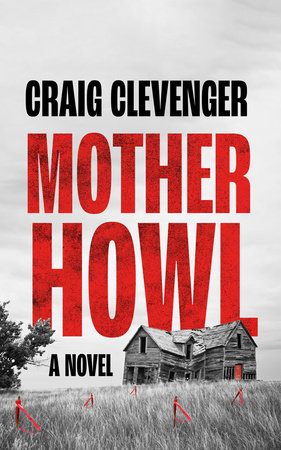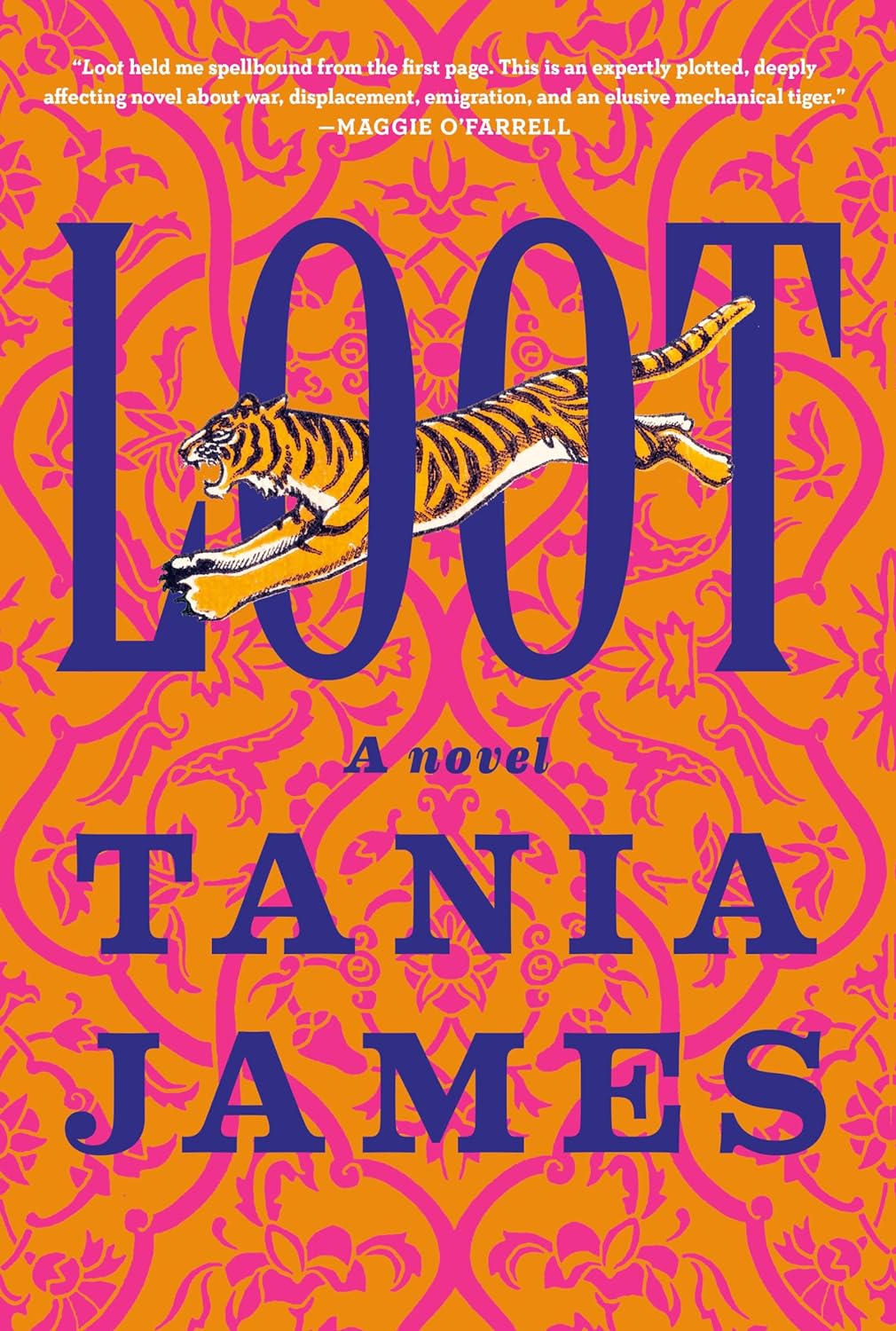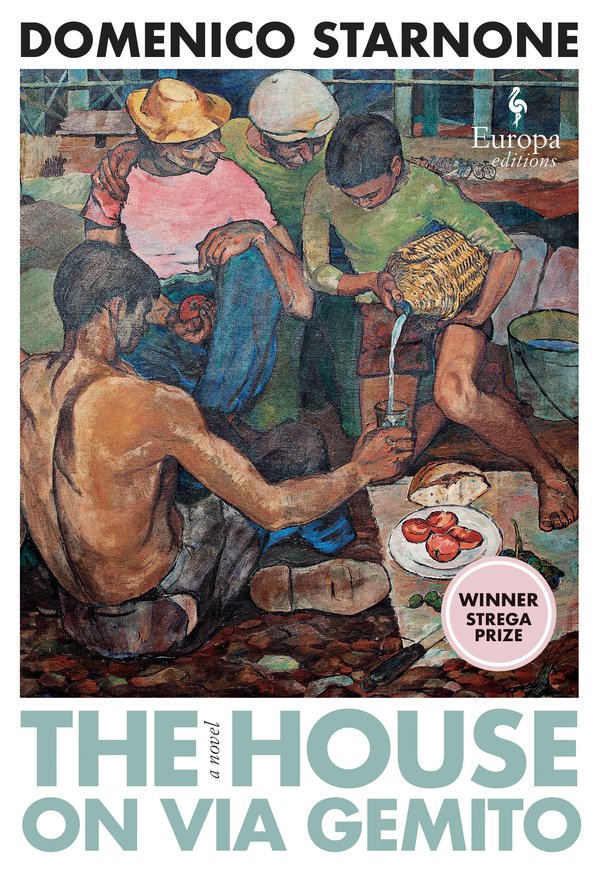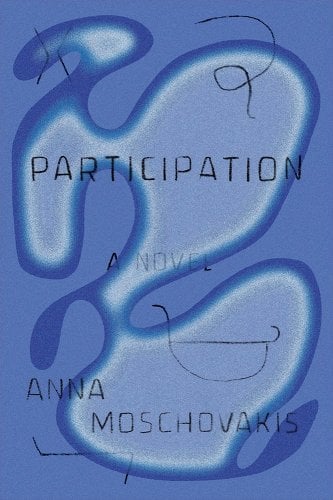Alexis Wright
New Directions ($22.95)
In the opening pages of Praiseworthy, the latest novel by Australian author Alexis Wright, we meet Cause Man Steel, a raving dreamer performing his anxieties for the “clergy-oriented” people of the titular town. Cause—variously referred to as Widespread, for the breadth of his ideas, and Planet, for their cosmic nature—is a step ahead of the game. These are “cataclysmic times,” he preaches, but Praiseworthy people are survivors with “a sovereign world view.” The choir has heard this one before, but Cause is offering more than survival; he promises the townspeople they will “ride straight through the century on the back of the burning planet” and live to tell the tale.
The catastrophe that sets Cause in motion is a haze “full of broken ancestors breathing . . . virus air.” As the haze settles over Praiseworthy, the townspeople try everything to banish it: They punch at it, play it Dvořák and Bach, lobby for its Constitutional exclusion. They curse it. They build a giant hologram scarecrow. They appeal to God and to the white government—Hail Marys and a Hail Mary. Resigned to its permanence, they promote it as a tourist attraction.
Eventually, the haze splits, metastasizing in the lungs of Ice Pick, the town’s mayor—a “rhapsodically self-proclaimed king of orators.” Possessed by the haze, Ice becomes “obsessed by whiteness”—his skin, even his eyeballs, turn white, and he covers his body with a “labyrinth of Casper the Ghost tattoos.” Ice warns his constituents that government help (in the form of explosives to blow up the haze) will never arrive if they “do not assimilate and be white,” and—with an eye on the upcoming election—promises to build “the new Praiseworthy into an all-bustling, all-glitter . . . Aboriginal world metropolis.”
But if Ice is a man of words, Cause is a man of action. Knowing that survival has always been an economic question, he looks backwards to look forwards, and decides to bet on donkeys; when global transportation systems collapse, he’ll be there with his carbon-neutral transport conglomerate. But his fleet needs a lodestar, a “Jesus donkey . . . the colour of an Apollo spaceship,” as was revealed to him in a dream. Cause feels called to greatness, like Genghis Khan, and for a few hundred pages, we follow him on his picaresque journey: Don Quixote in search of his ass.
It’s the family, of course, that suffers. Cause’s wife, Dance, has dreams too, and no “desire for being a stand-in for [him] as the social pariah of the community.” Their eldest son, Aboriginal Sovereignty—named for the words Cause most liked saying—is a seventeen-year-old amateur boxer and dancer; Tommyhawk, their youngest at eight, believes that Aboriginal parents are heartless and that all Aboriginal men are pedophiles—and acts accordingly. When his brother falls in love with his promise wife, who is only fifteen, Tommyhawk reports him, and Aboriginal Sovereignty is arrested for raping a minor.
Epic in scope, Praiseworthy is split into ten sections. The second opens with Aboriginal Sovereignty walking into the sea—“flat out disappearing into the mighty shark-infested ocean”—and continues for over a hundred pages as Tommyhawk, hiding nearby in a whale skeleton and eating a bag of chips, impatiently wills his brother on, a harrowing inversion of the story of Cain and Abel. Suicide by drowning is common in Praiseworthy, especially among the kids: “It was like a pied piper thing, somebody’s spirit coming up from the sea at night and talking rubbish to those children.” The sea has become a tomb, and fishermen involuntary “corpse hunters.” Shouldering Ecclesiastical pain, the people of Praiseworthy know that “wave after wave of their eternal tides of grief [will] end up plonking Aboriginal Sovereignty right back in the midst of the breathing heart and soul of the traditional country.”
Alexis Wright is a member of the Waanyi nation of the southern highlands of the Gulf of Carpentaria; she grew up in Cloncurry, a small town in northwestern Queensland about a thousand miles from the capital. She published her first novel in 1997 and in the quarter-century since has written furiously about violence, cruelty, injustice, and hopelessness in a humane, generous, and hopeful manner. As in her other works, church and state loom large in Praiseworthy, and are cast against the permanence of country. There are “sixty thousand lightning bolts in every dry storm,” an allusion to the “sixty thousand year plus cultural history of Aboriginal survival.” At a slight breeze, the churches of Praiseworthy topple “like a line of dominoes.”
In all of Wright’s books, language does power’s bidding. Praiseworthy people use “God words for renovating their Dreamtime cathedrals” and know “being literate in government affirmative action jargon talk” is essential. The colonial “gaol” is retained, and signs outlining the prohibition of liquor, pornography, and pedophiles in Praiseworthy are written in English—a language ignored by the old fishing people. Yet in the face of country, language recedes:
The old men and women eternally searching for the return of Aboriginal Sovereignty were bequeathed to nothingness, other than to a consciousness of interconnectedness where relatives were all life, and further related to ancestral creators, and further related back into deep time, and across all country places of land, sea, and skies.
The impassiveness of country is total. The seagulls “never once landed on any of these signs . . . nor had a single lizard, ant, or any other animal like a snake bothered twisting itself around a government signpost.” A few pages later, thunder roars, and forks of lightening “hit every single one of the signs . . . like a circle of firecrackers lit up on a cake.”
Still, language is persistent, and in Ice Pick, word becomes flesh. “See this piece of paper? That’s me . . . You are looking at the bodily incarnate of this piece of paper. I am the Commonwealth Government of Australia’s forward plan for Praiseworthy.” For Ice, assimilation is the key, and he implores his constituents to leave grief behind and embrace figures, multiplication, economics; follow him into the future and he will “make the ark pure again.” Aboriginal Sovereignty is the ultimate target:
He was being personified by the imagination of the nation-state, the dull dirty lens of Australian folk law. Yep! He was the ethnological story. He fed the hunger. Fattened the mudslinger’s narrative of racial vilification. He was the paedophile savage. You know what happens when you throw enough mud? Hallelujah! . . . The national narrative strengthened at the total cost of billions of dollars to hold back the tide of black justice through a simple illusion of fear, the dreaded uprising of the soul, the spirit of black savages attacking Australian domesticity. Nothingness achieved again, and again. Where was the light? Where was the flame to see the way?
Praiseworthy, a big novel in every sense, ranges from deep in the sea to the “dusty rivers of stars in the Milky Way” as well as across time and “through all the known spatial realities.” There are references to Borges and Calvino, Kafka and Krasznahorkai, as well as to a Waanyi language dictionary, Livy’s History of Rome, the operas of Belshazzar and Offenbach, Puccini’s Madama Butterfly, Donne and Shakespeare, Greek, Chinese, and Japanese mythologies, pop culture high and low, various oral traditions, and the Bible, again and again. It’s not tidy, and that’s the point—because it contains all of country, the “atmosphere, cosmos, stars, heavens, lands, seas, flora and fauna,” this latest outing from an exemplary Australian writer refutes domesticity and affirms sovereignty unapologetically.
Click below to purchase this book through Bookshop and support your local independent bookstore:
Rain Taxi Online Edition Spring 2024 | © Rain Taxi, Inc. 2024

